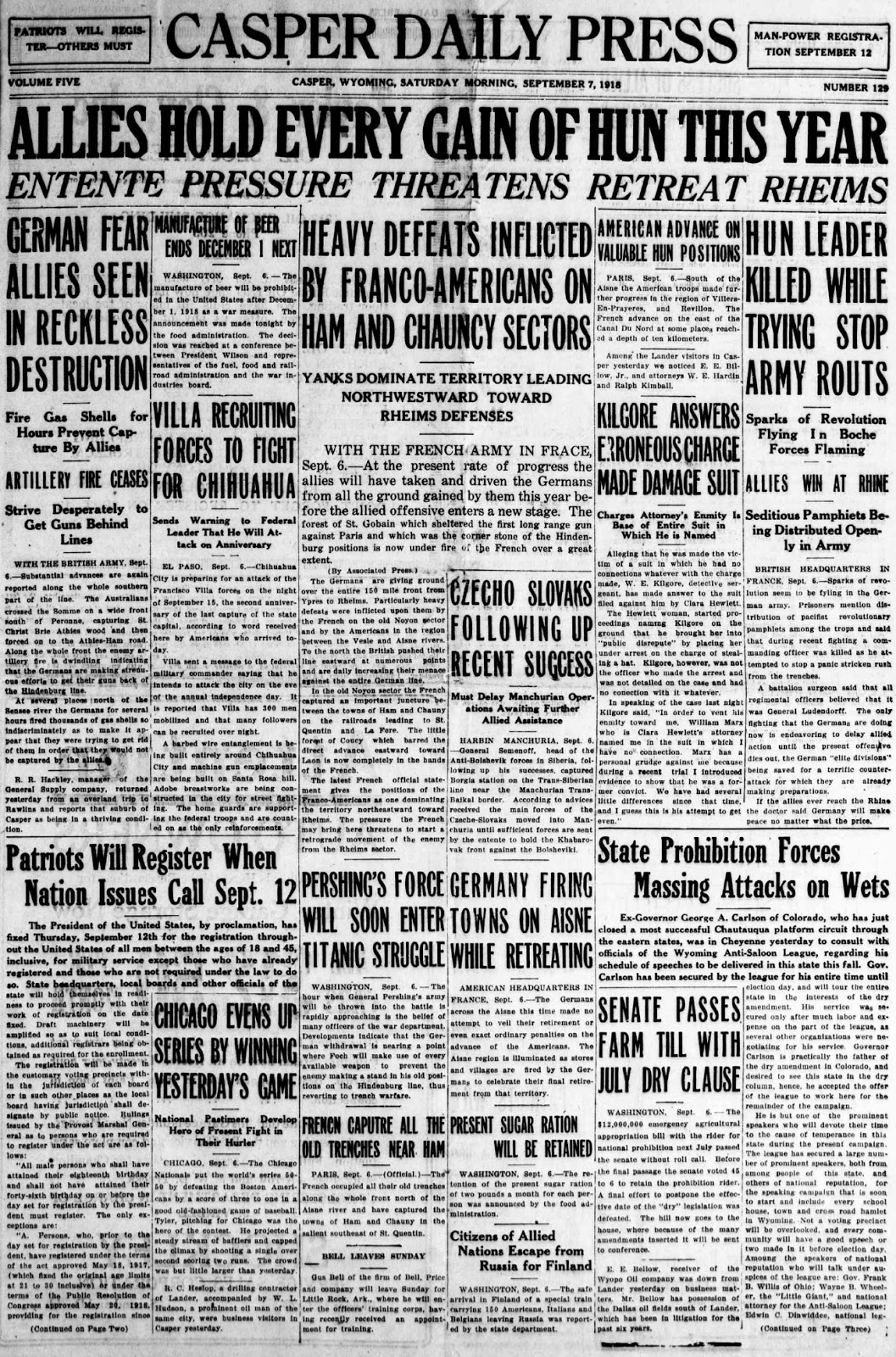1870 Nathaniel P. Langford sketched the first detailed map of Yellowstone Lake from the vantage point of Colter Peak. Attribution: On This Day.
1873 Capt. W. A. Jones names Togwotee Pass after his Sheepeater (Mountain Shoshone) guide, Togwotee. Attribution: Wyoming State Historical Society.
1918 Beer becomes a casualty of the Great War and Villa resurgent. September 7, 1918.
Prohibition, which was rising prior to World War One, gained massive momentum during the war for a variety of stated reasons and a series or more significant unspoken psychological ones.
On September 6, 1918, it received a big boost in the form of an emergency agricultural bill that had been amended to include a ban on brewing on December 1, 1918. There was a certain logic to the ban, in that resources were really tight and the brewing of beer consumed agricultural products that could go elsewhere. But that only provided part of the reason for banning brewing. The more significant one was that the American public had been persuaded by the war to take the country dry, in part due to concerns that soldiers in hastily assembled Army camps would booze it up in nearby, formerly quiet, towns and in part by fears that soldiers far from home would be corrupted by drink outside the eyes of their families, both in the US, and away in wine laden France.
That can be seen in particular by the paper above, which not only noted the passage of the bill, but the mustering of dry forces that would seek to carry on Prohibition post war. . .a move that was successful. . . and not.
Meanwhile, the war in France itself was going well, but Villa was resurgent in Chihuahua.
1918 Beer becomes a casualty of the Great War and Villa resurgent. September 7, 1918.
Prohibition, which was rising prior to World War One, gained massive momentum during the war for a variety of stated reasons and a series or more significant unspoken psychological ones.
On September 6, 1918, it received a big boost in the form of an emergency agricultural bill that had been amended to include a ban on brewing on December 1, 1918. There was a certain logic to the ban, in that resources were really tight and the brewing of beer consumed agricultural products that could go elsewhere. But that only provided part of the reason for banning brewing. The more significant one was that the American public had been persuaded by the war to take the country dry, in part due to concerns that soldiers in hastily assembled Army camps would booze it up in nearby, formerly quiet, towns and in part by fears that soldiers far from home would be corrupted by drink outside the eyes of their families, both in the US, and away in wine laden France.
That can be seen in particular by the paper above, which not only noted the passage of the bill, but the mustering of dry forces that would seek to carry on Prohibition post war. . .a move that was successful. . . and not.
Meanwhile, the war in France itself was going well, but Villa was resurgent in Chihuahua.
1919 Cornerstone of St. Anthony's Catholic Church in Casper set.
1925 Monday, September 7, 1925. Failed landing at Al Hoceima.
1927 TV pioneer Philo T. Farnsworth succeeded in transmitting an image through purely electronic means by using a device called an image dissector, thereby ushering in the end of contemplative thought and decent civilization.
1927 TV pioneer Philo T. Farnsworth succeeded in transmitting an image through purely electronic means by using a device called an image dissector, thereby ushering in the end of contemplative thought and decent civilization.
1936 Max Baer defeated Cowboy Sammy Evans in a prize fight in Casper.
1945 Trains were halted west of Green River as a bridge was destroyed by a fire. Attribution: Wyoming State Historical Society.
1995 The Van Vleck House in Jackson was added to the National Register of Historic Places. Attribution: On This Day.




No comments:
Post a Comment